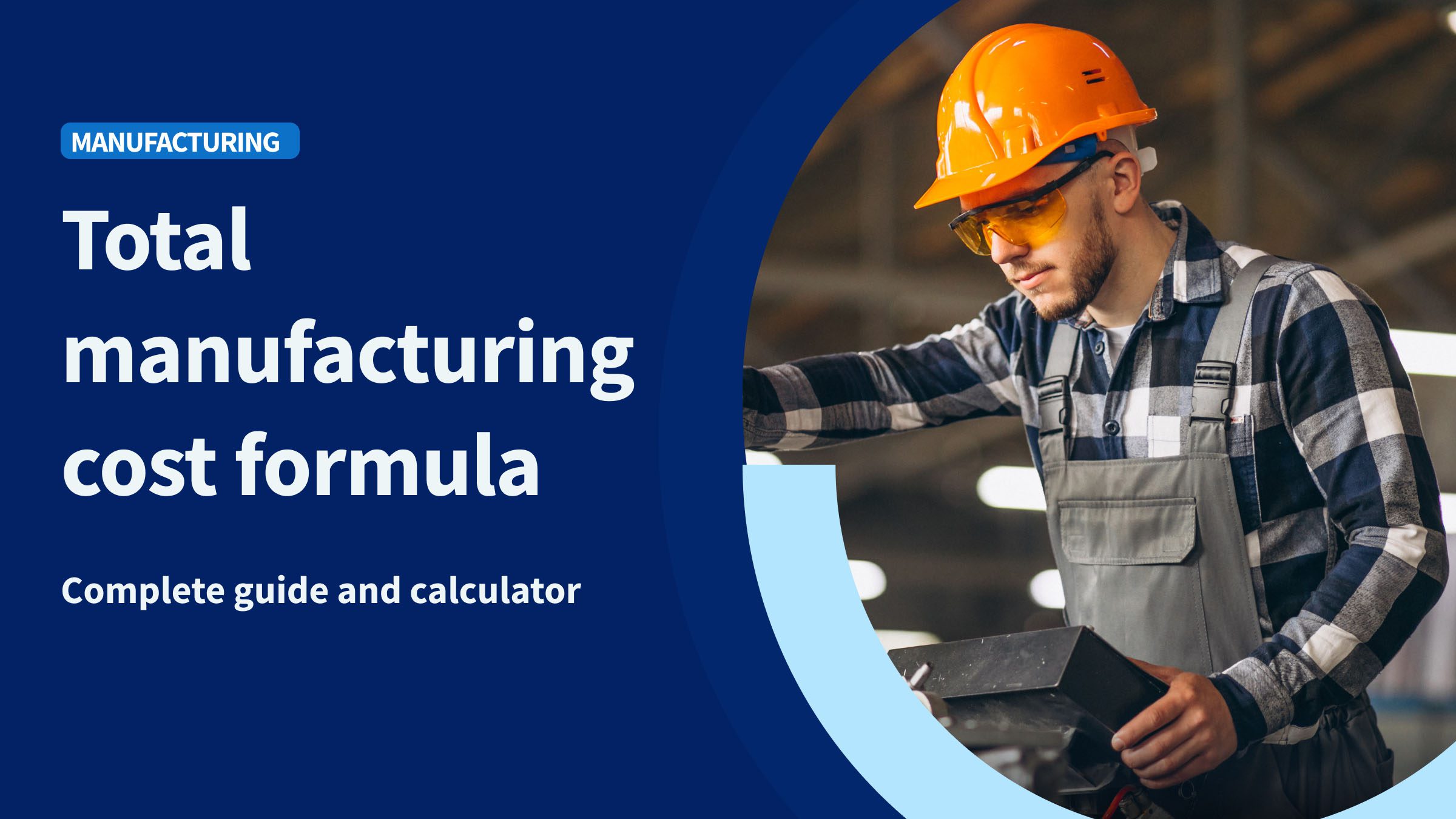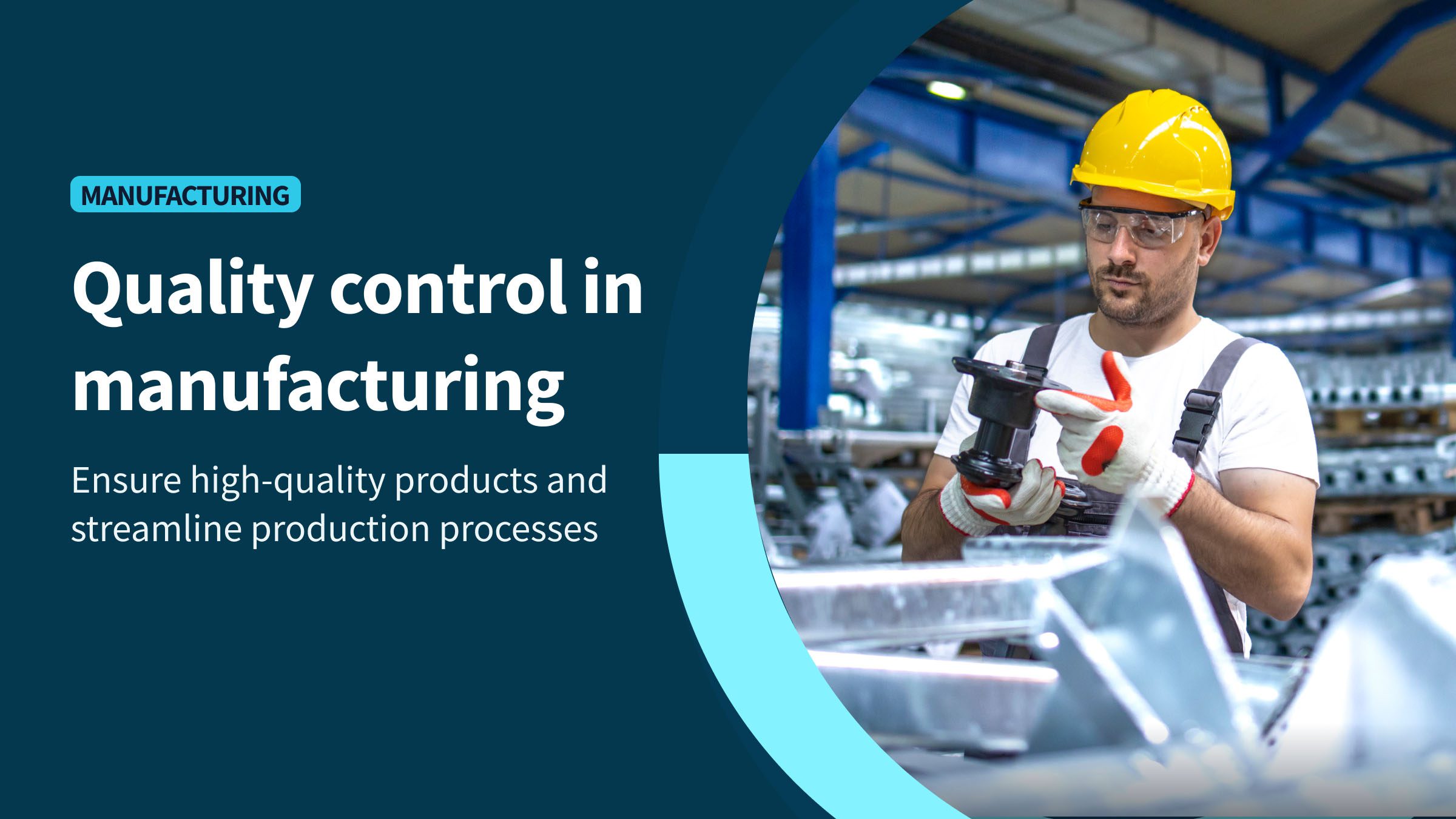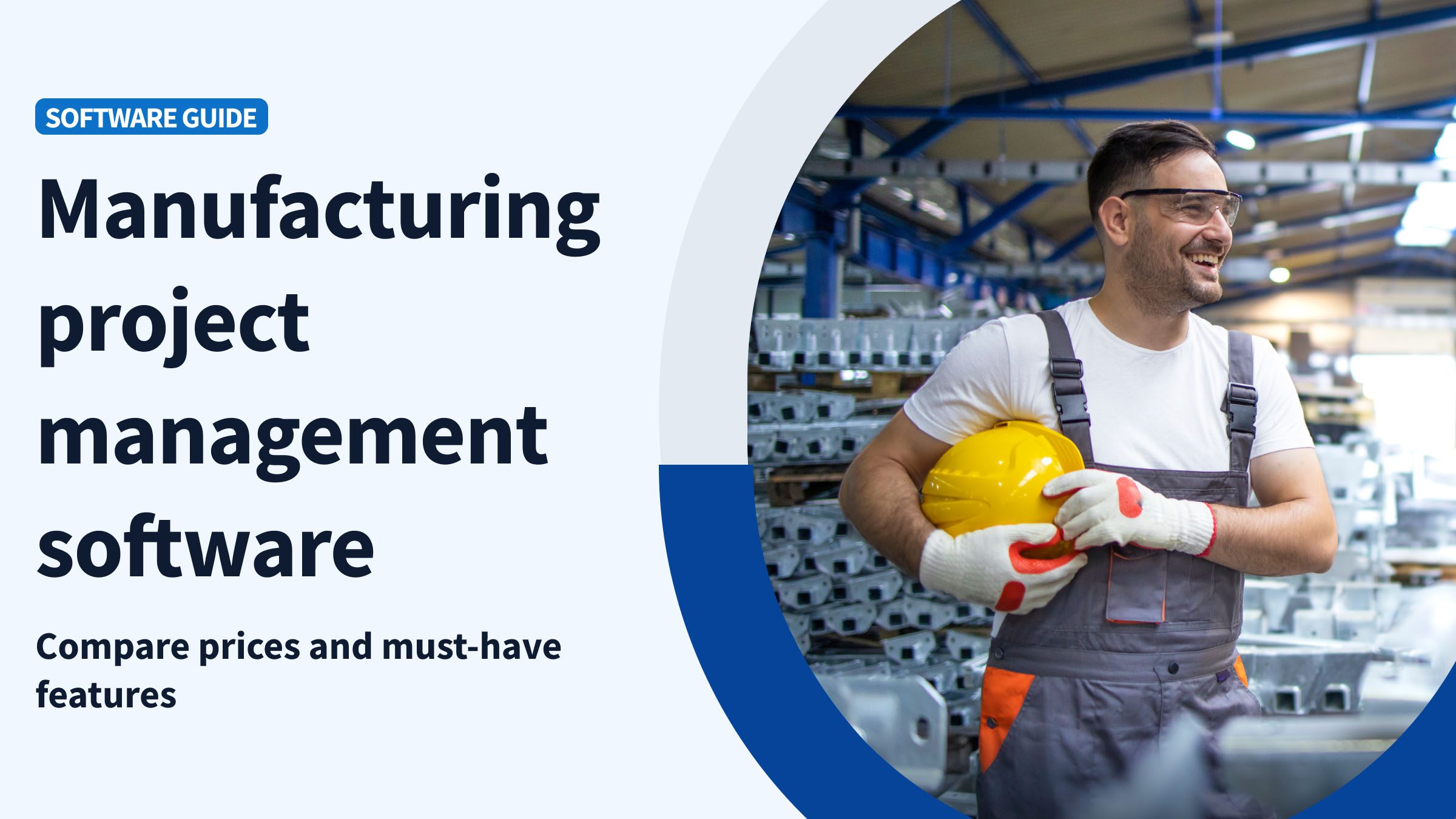In the manufacturing business, you strive to eliminate all guesswork by knowing the exact inputs and outputs involved in the production process. This is why Total Manufacturing Cost, or TMC, is so important. It gives a holistic view of absolutely everything involved cost-wise when you are running the books on production costs. In manufacturing, it’s one of the most important metrics, but why? 🤔
Here at Method CRM, we’ve been supporting QuickBooks-based businesses since 2010. Method is loved by business owners in the manufacturing sector for its two-way QuickBooks sync, customization services, and end-to-end sales automation. In this article, we’ll break down how TMC is calculated and how to use it. ✍
Table of Contents
- What is the total manufacturing cost? 💰
- Total Manufacturing Cost formula 📚
- Breakdown of direct materials ⚙️
- Breakdown of direct labor 👷♂️
- Breakdown of manufacturing overhead 🏭
- Calculating Cost Per Unit 📦
- Tying TMC to financial statements and inventory 🗂️
- Real-world considerations 🌍
- Bottom line: TMC is knowledge, and knowledge is power 🧠
- Frequently asked questions
What is the total manufacturing cost? 💰
Total Manufacturing Cost, or TMC, is all of the costs and inputs involved in producing a product, not just the raw materials. The three main components of TMC are direct labor, direct materials, and overhead. It allows manufacturers to get a bird’s-eye view of everything involved in the production and manufacturing of a given product over a given period of time.
Why TMC matters 💡
In the world of manufacturing, timing matters, and it matters a lot. Just ask the manager of a production facility in Shenzhen, China, how business might ramp up to lightspeed if there is a tariff being implemented on a manufactured product in the near future. The same goes for all of the inputs involved in manufacturing; TMC shows the production costs involved in manufacturing your product today in real time — not what the price sheet says, and not last year’s numbers.
TMC helps you to
- Set pricing with confidence
- See which products are actually profitable
- Understand how changes impact cost
- Manage inventory, forecasting, and purchases
- Make decisions about equipment and staffing
TMC is only part of the story when it comes to manufacturing; it’s directly correlated to two other cost metrics. Cost of Goods Manufactured (COGM) and Cost of Goods Sold (COGS).
Cost of Goods Manufactured (COGM) 💵
COGM shows the total cost of the products that were finished during the period, regardless of whether they have been sold yet. Some of those finished goods may stay in storage as inventory, while others may ship out the door right away. COGM helps you understand the cost of what you actually moved out of production and into finished goods.
How TMC is used in COGM
Imagine that you are a small furniture manufacturer, for example, and you spend $500,000 this quarter on total manufacturing costs (TMC). At the start of the quarter, there’s $60,000 worth of unfinished furniture (Beginning WIP), and by the end, $40,000 remains unfinished (Ending WIP).
| Item | Amount (USD) |
|---|---|
| Total manufacturing cost (TMC) | $500,000 |
| Beginning work-in-process (WIP) | $60,000 |
| Ending work-in-process (WIP) | ($40,000) |
| Cost of goods manufactured (COGM) | $520,000 |
You and your company manufactured $520,000 worth of finished goods this quarter, even if not all of them have sold yet.
Cost of Goods Sold (COGS) 🏷️
COGS appears on the income statement and represents the cost of the goods that were actually sold to customers during that period. Even if you produced more inventory than you sold, only the cost of the goods that left your business as sales will show up in COGS. The formula adjusts for inventory levels, because you may not sell everything you produce in the same time period.
How COGM connects to COGS
Now, using that example of the $520,000 in finished goods, let’s say you started the period with $100,000 in finished inventory and ended with $80,000.
| Item | Amount (USD) |
|---|---|
| Beginning finished goods inventory | $100,000 |
| Cost of goods manufactured (COGM) | $520,000 |
| Ending finished goods inventory | ($80,000) |
| Cost of goods sold (COGS) | $540,000 |
So $540,000 of those costs actually hit the income statement as Cost of Goods Sold, and the rest stayed in inventory waiting to be sold.
Total Manufacturing Cost formula 📚
The total manufacturing cost formula is designed to give you an all-encompassing view of the total combined cost of producing your product over a set period of time. It includes the materials used, the labor required to run the line, and the overhead that keeps the facility operating.
The formula for total manufacturing cost is:
For example, let’s say that a candle manufacturer wants to check to see what’s going to happen with potential increases in employees and materials, they can calculate their current TMC, and then play around with the variables later for forecasting.
| Item | Amount (USD) |
|---|---|
| Direct Materials | $40,000 |
| Direct Labor | $25,000 |
| Manufacturing Overhead | $15,000 |
| Total Manufacturing Cost (TMC) | $80,000 |
Each of these components needs to be calculated correctly to get an accurate number. Let’s break them down.
Breakdown of direct materials ⚙️
If a customer receives a product, everything the customer can touch, see, or that is inside the product, counts as a direct material. Materials that support and are involved in production but don’t become part of a specific unit, like lubricants, solvents, gloves, or cleaning supplies, are considered indirect materials. Indirect materials support production as a whole and cannot be traced to a single product. Because of that, indirect manufacturing cost is grouped under manufacturing overhead, which will be dealt with in a later section.
How to calculate direct material cost
The formula is as follows:
For instance, a furniture maker using $25,000 worth of hardwood and fabric in a month would include those costs as direct materials, since they become part of the finished product.
| Item | Amount (USD) |
|---|---|
| Beginning raw materials inventory | $5,000 |
| Purchases of raw materials | $25,000 |
| Ending raw materials inventory | ($4,000) |
| Direct materials used | $26,000 |
It’s important to keep a close eye on your raw material usage, and ideally review it each month. This formula allows you to see how small shifts in inventory can reveal hidden trends that you might want to avoid.
Breakdown of direct labor 👷♂️
Direct labor refers to the workers involved in manufacturing an end product. These are the people who physically make the product and who do things like assemble parts, mix batches, and inspect the output. Costs include their wages, payroll taxes, benefits, and overtime tied directly to production work. Not everyone in the plant or factory counts as direct labor; some will be considered indirect expenses and thus overhead, as delineated below.
| Included in Direct Labor | Not Direct Labor (Goes to Overhead) |
|---|---|
| Wages or hourly pay for production workers | Production supervisors |
| Overtime pay | Maintenance technicians |
| Employer payroll taxes | Quality control staff |
| Benefits tied to production roles | Shipping and warehouse staff |
Keep a clear record of who counts as direct labor and who doesn’t. For example, a small bakery might include bakers and decorators as direct labor, but count the delivery driver and store manager as overhead.
Breakdown of manufacturing overhead 🏭
Most people in business will be more than familiar with the concept of overhead expenses, and manufacturing overhead costs are the costs that keep the facility running. In the manufacturing process, these include things like plant rent, utilities, equipment depreciation, property taxes, indirect labor, and indirect materials.
Fixed vs. variable overhead
Some overhead costs stay the same regardless of how much you produce, while others change with production volume.
| Type | Definition | Examples |
|---|---|---|
| Fixed overhead | Stays the same month to month | Facility rent, equipment depreciation, property taxes |
| Variable overhead | Changes in production output | Utility usage, consumables, minor supplies |
How overhead is allocated
Because overhead can’t be tied to one specific unit, it is applied across production using a predetermined overhead rate. This helps spread shared costs fairly across the products you make.
Overhead cost per unit changes with production volume. When you produce more units, fixed overhead is spread across more output, so the cost per unit goes down. When production slows, that same overhead is divided across fewer units, so the cost per unit rises. This is why a drop in output can shrink margins even if nothing else changes.
| Production Volume | Total Fixed Overhead | Units Produced | Overhead Cost per Unit |
|---|---|---|---|
| High Output | $100,000 | 10,000 | $10 |
| Medium Output | $100,000 | 5,000 | $20 |
| Low Output | $100,000 | 2,000 | $50 |
Use this calculator to quickly estimate your true manufacturing costs so you can price confidently, improve margins, and make smarter production decisions.
Note: This calculator provides simplified cost estimates for educational purposes. Actual manufacturing costs may vary, and you should consult an accounting professional before making financial decisions.
Calculating Cost Per Unit 📦
Once the total manufacturing cost is calculated, divide it by the number of units produced:
Cost Per Unit = Total Manufacturing Cost ÷ Number of Units Produced
Cost per unit is one of the most important terms in manufacturing, as it tells you the minimum price you need to charge so that you can avoid selling at a loss. It’s a numerical representation of the actual profitability of a product, not just a theory. Once you know your cost per unit, you can start adjusting production lines and margins to get that CPU down. Again, you won’t be able to know what your CPU is without knowing what your TMC is.
How production volume affects cost per unit
Let’s take a furniture manufacturer producing 10,000 units of a new couch with a total manufacturing cost of $1,049,200. That works out to $104.92 per unit (couch). Now, if production increases to 12,500 units using the same facility and overhead, the fixed costs are spread across more output, reducing the cost per unit to $83.94.
1,049,200 ÷ 12,500 = $83.94 per unitThe per couch cost becomes cheaper to produce because fixed overhead is spread across more units. And thus, this is why production planning is so utterly important.
Cost per unit for a mid-sized manufacturer
Here’s how total manufacturing cost and cost per unit might look for a mid-size manufacturer during one production period:
Once you know your cost per unit, you can set pricing that protects your margins. Instead of guessing a markup, you can decide exactly how much profit you want on each unit, then price accordingly. This also makes it easier to compare margins across products and prioritize the ones that deliver the strongest return.
Tying TMC to financial statements and inventory 🗂️
Total manufacturing cost (TMC) tells you what it costs to produce goods during a specific period. But those costs don’t all hit your profit and loss right away. First, they move through inventory. When materials are purchased, they sit in Raw Materials inventory. As production begins, those costs move into Work-in-Process (WIP). Once the product is finished, the cost shifts to Finished Goods. At this stage, the cost is still on your balance sheet, not yet recognized as an expense.
You only record the cost on the income statement when the product is sold. That’s when finished goods convert to COGS (Cost of Goods Sold). Inventory levels determine how much cost stays on the balance sheet and how much flows into expense. Beginning and ending inventory for raw materials, WIP, and finished goods show how production and sales moved throughout the period.
| Item | Where it Appears | What it Represents |
|---|---|---|
| TMC (Total Manufacturing Cost) | Internal production tracking | Total cost to manufacture goods during the period. |
| COGM (Cost of Goods Manufactured) | Cost reporting | Cost of goods completed and moved from WIP to Finished Goods. |
| COGS (Cost of Goods Sold) | Income statement | Cost of goods that were actually sold during the period. |
| Inventory | Balance sheet | Value of goods not yet sold. |
A higher TMC doesn’t automatically mean lower profit. If more product was completed than sold, part of the cost is now sitting in finished goods inventory, not expensed yet. When those units sell, that cost moves into COGS and affects margin at that point.
Real-world considerations 🌍
Much of the time, smaller manufacturers will struggle with typical manufacturing issues, such as supply chain delays, quality issues, and overhead that continues to rise. Understanding how these numbers work will allow you to tweak and play around with them to understand what a drop in output might do to your overall cost base. But do be wary of how costs can move from one ledger to another. Automation, for example, can be a huge advantage when attempting to decrease direct labor costs. However, the maintenance and depreciation will also increase overhead — something to be aware of.
The most important thing is to track fixed and variable costs with tools like Method CRM. This helps forecast margins, spot cost spikes early, and guide smarter pricing and production decisions.
Example: How TMC is used to make investment decisions.
A small furniture manufacturer based in Ohio had its orders drop by 25% due to issues in the housing market. They decided to calculate their TMC and noticed a slight uptick in cost per unit, which they realized was due to overhead.
| Scenario | Units Produced | Fixed Overhead | Variable Cost per Unit | Total Cost | Cost per Unit |
|---|---|---|---|---|---|
| Full capacity | 10,000 | $200,000 | $40 | $600,000 | $60.00 |
| Output down 25% | 7,500 | $200,000 | $40 | $500,000 | $66.67 |
A 25% output drop raises the cost per unit by more than 10%. The company can now decide if it wants to invest in automation, have a look at raw material inputs again, etc.
Bottom line: TMC is knowledge, and knowledge is power 🧠
Total Manufacturing, expressed as the formula TMC = Direct Materials + Direct Labor + Manufacturing Overhead, is the data point that unlocks everything else. Cost per unit and an understanding of how production works on the margins are the key to unlocking more profitability overall. In regards to TMC, in order to arrive at this all-important number, it’s crucial to track every single component with the utmost diligence. This is where technology comes into play; by leveraging CRMs like Method, you can track components and increase profitability more than you might have thought possible. 🚀📈
Frequently asked questions
What are manufacturing costs also known as?
Manufacturing costs are sometimes referred to as MLO, meaning material, labor, and overhead. It’s just a general phrase, and doesn’t get into the mathematical specifics that TMC does.
How does the Total Manufacturing Cost formula help a small business understand its cost of production?
The total manufacturing cost formula gives a small business a clear view of its full cost of production by combining the cost of raw materials, direct labor, and the overhead tied to manufacturing equipment. When you calculate these pieces together, you can spot inefficiencies that drive up costs and make smarter decisions about pricing and margins. It’s one of the simplest ways to gauge your financial health because you see exactly where your money is going during production, rather than guessing or relying on averages.






